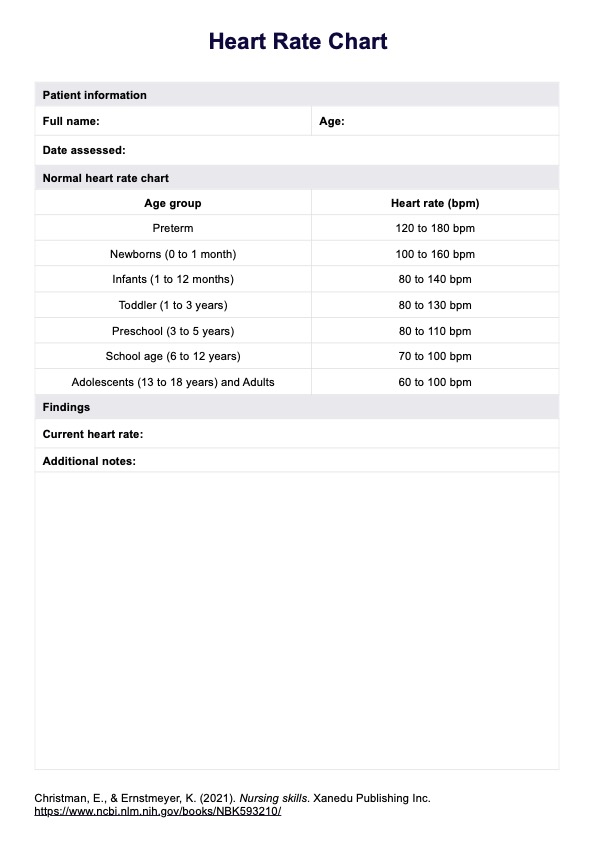Anyone seeking to monitor their heart rate or compare it with the age-related ranges based on activity can request a heart rate chart. These may typically be requested by general practitioners, nurses, health coaches, or individuals.

Master heart health with our Heart Rate Chart: A crucial guide for monitoring and understanding heart rate patterns.
Anyone seeking to monitor their heart rate or compare it with the age-related ranges based on activity can request a heart rate chart. These may typically be requested by general practitioners, nurses, health coaches, or individuals.
Heart rate charts are primarily used as a reference tool for managing and monitoring heart rate. Scenarios that may typically be used include routine health checkups, exercise prescriptions, or intensive care units.
These charts are used as a visual reference tool to compare measured heart rate, either during rest or immediately following activity, with the recommended age ranges specific to the training status. For example, when identifying if the resting heart rate is healthy, general practitioners may measure the patient's heart rate at wakeful rest and compare it to the resting heart rate range relevant to the patient’s age.
EHR and practice management software
*No credit card required
Free
$0/usd
Unlimited clients
Telehealth
1GB of storage
Client portal text
Automated billing and online payments